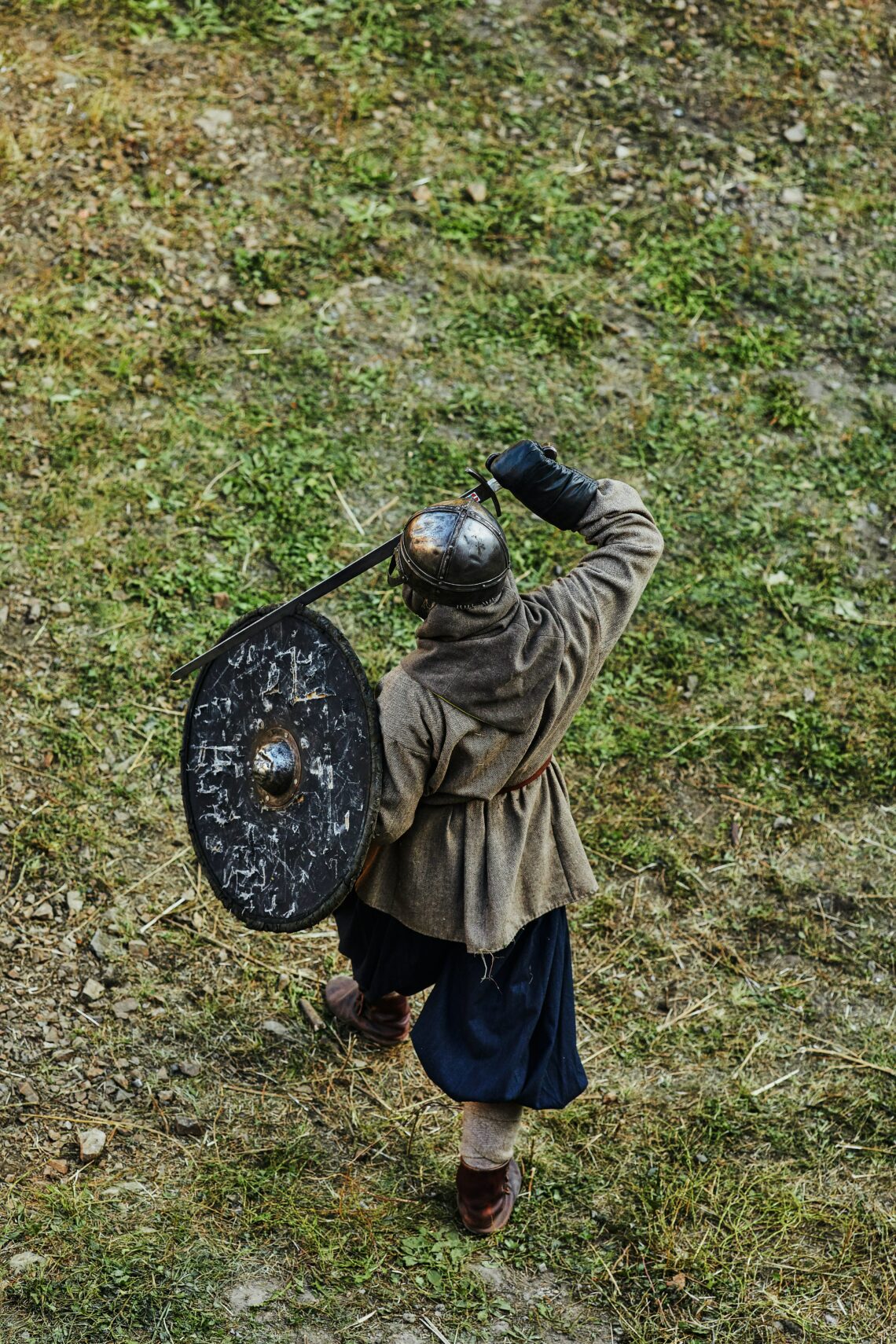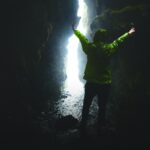In this free inquiry blog post I will focusing on the way in which fight scenes are often shot and edited. In this blog post I hope to do more of a comparison between the films and delve into the choices they made and why they might have been made than just focus on the techniques as I did in the last post. Due to the comparison aspect of this post I will be covering two films per type of fight scene. I will be covering the three main types of fight scenes which are often seen in movies, which include, hand to hand fighting, sword fighting, and gun fighting. I will have three examples of each included for each topic, some will be good examples, while others are not.
Hand to Hand
- Oldboy [2003] by Park Chan Wook vs. Oldboy [2013] by Spike Lee.
Park Chan Wook’s Oldboy is widely considered the one of the best pieces of film to ever come out of South Korea. This is quite the feat as well when one considers the quality of films which are constantly coming from South Korea, including, Handmaiden, Parasite, Memories of Murder, and so many more. This is mainly due to the way in which the story develops through the film, the unique presentation of the film, and having one of the best endings in any movie ever made. With the background of how influential and acclaimed this film is, one of the most iconic scenes in Oldboy [2003], is the fight scene which occurs mid-way through the film. This fight scene is so effective due to several factors: the framing and editing, the claustrophobia of the hallway, the exhaustion and desperation shown by Choi Min-sik in the scene. It is also an effective scene because of how the attackers behave throughout the scene and how their mannerisms change throughout the fight is very important for the impact of the scene.
Spike Lee’s Oldboy is a remake of the 2003 version by Park Chan Wook and as stated by Spike Lee, is a reinterpretation of the original. This film is the main reason for my distaste for Spike Lee and while he may not have made the decision to remake Oldboy, he obviously did not care about the product. The entire film misses the points of the original film and often times takes much of the impact and emotions out of scenes which were present in the original. This includes the iconic fight scene.
- Framing & Editing:
The framing and editing which is present in this scene in the 2003 version of Oldboy is the most essential aspect and is what sets up the claustrophobia felt by the main character as well as makes the exhaustion and desperation felt so much more apparent. The framing of setting this fight in a cramped hallway full of opponents allows for this scene to be done without being goofy because all the characters are restricted from moving freely around and are contained by the walls of the hallway. The editing is also extremely important as it shows how intense and brutal the fight is for the main character and being a one-shot allows the audience to follow the fight with the main character and see all of his hardships throughout the scene. The scene being edited in this way is essential for the audience to understand what the main character is willing to go through to achieve his goal of vengeance.
The framing and editing that is present within the fight scene in Spike Lee’s version of Oldboy attempts to imitate aspects of the original but misses the mark on several occasions. This scene is also done as a one-shot in the remake which is very impressive but the sound editing is awful and unrealistic, and the open space removes a lot of the tension. I do not have much to say about this scenes framing and editing because the framing is very standard throughout much of the scene and the editing is a one-shot so not a ton of visual editing is included in this scene.
- Claustrophobia:
As stated above, claustrophobia is a very significant aspect of the fight scene in the 2003 version of Oldboy and this setting is used for several reasons. Firstly, it is essential for the scene to be framed this way to be taken seriously and for the drama of the scene to be effective. If this scene was shot in an open area the opponents behaviour would have been perceived as goofy and the main character winning the fight would be entirely unrealistic. Keeping the scene within the cramped hallway allows for believability that the main character could win the fight because this setting. The claustrophobia becomes more and more present as the scene goes on and he gets further into the building and as he becomes surrounded on both sides by enemies. I am unsure of any way in which this scenes claustrophobic effect could be improved.
The claustrophobia is present in some parts of the fight scene in the 2013 remake but a lot of the feeling is lost due to the way it is shot and edited. It begins with the main character walking into frame and then the opponents also coming into frame but unlike the original the scene is well lit and it is not set in a cramped hallway. Both of these factors hurt the scene when it is compared with the first because it seems that they missed the point of the original and removed a lot of the tension of the scene. It also removes the believability that the main character could overcome these opponents as they are not restricted in their movements, unlike the original.
- Exhaustion & Desperation:
The exhaustion and desperation of the main character is also another aspect which makes this scene so powerful. It truly shows the determination and stubbornness this character has to enact his revenge on the antagonist of the film. It is said that Park Chan Wook made Choi Min-sik do the scene over and over so that the exhaustion would be real and the actor would have to push past this exhaustion to finish the scene. The dedication to filmmaking that everyone involved in the 2003 version of Oldboy is so present and it makes the film so enjoyable to watch. This exhaustion and desperation is also shown every time the main character takes punishment and he becomes slower or more uncoordinated but continues to push on. It feels as though you are watching someone who is truly driven to achieve his goals and often does not feel like a fictional scene.
The exhaustion and desperation of the main character is also lacking in the remake and is often not even present. The main character in Spike Lee’s version is more indestructible and goes through much less resistance in this scene than his South Korean counterpart. The fight itself is also ridiculous and honestly seems goofy in its implementation and way too over the top to be considered tense or real. Somehow Spike Lee thought that making the character take more damage than in the original but not nearly as effected. I cannot understand why these choices were made when the template for the perfect scene was already available.
- Behaviour of Opponents:
The behaviour of the opponents that the main character is taking on is also an important aspect of the scene and is one thing which makes the scene so effective in delivering emotion to the audience. At the beginning of the scene the audience is shown a large group of enemies which the main character will have to defeat to get to his goals and they start of as a menacing and motivated looking group. Throughout the scene however, there is not only a change in the main characters behaviour but the audience can clearly see how the opponents are changing throughout the scene as well. The audience can slowly see the fight fall out of the opponents and they become less and less sure about engaging with the main character. It also seems that all extras involved in the scene knew what their role was and what they should be doing at any given time. All of these factors makes this one of the best fight scenes ever shot.
In the remake the behaviour of the opponents again misses the mark of what the original was trying to portray. Unlike the original, the extras very obviously do not know what to do unless they are attacking the protagonist. It also is hard to track the opponents because there are so many of them in a more open space. The change in opponents is also not as present because in the American version of the film the protagonist basically one-hits most of the opponents and does not allow for them to get back into the fight. You can see in some places opponents fleeing from the main character but that is really all that is left of the original scene in the remake.
- What do you think?
I by no means am trying to say that someone should enjoy one of these scenes more than the other but I do believe that their is an objective quality in the original that is lacking in the remake. While this is my belief, others may feel differently and I am interested in hearing what you think about these scenes and if you prefer the American version more.
- Information:
How To: Film a Fight Scene – Pulse Film School Blog (pulsecollege.com)
Video: YMS: Oldboy – YouTube
Sword Fights
- Crouching Tiger, Hidden Dragon [2000] by Ang Lee vs. The Tragedy of Macbeth [1971] by Roman Polanski.
- Setting:
The first example of sword fights which will be covered is the film called Crouching Tiger, Hidden Dragon which came out in 2000 and was directed by Ang Lee, a renowned but somewhat inconsistent filmmaker. While Ang Lee may be inconsistent at times Crouching Tiger, Hidden Dragon is a masterpiece of an action movie and includes one of the best sword fights ever filmed. The setting is the beginning and can be one of the most important aspects of any fight scene as it lays the stage for the rest of the scene. In Crouching Tiger, Hidden Dragon, this sword fight takes place in an ancient looking Chinese temple or mansion. These setting is perfect for a sword fight as it is taking culturally appropriateness into account and makes it quite obvious that these two characters have extensive experience with Chinese martial arts, including sword fighting. Due to the culture and time period which the film is set in, it also makes sense that these people would have an understanding and experience with sword fighting.
The second example of sword fights come from Roman Polanski’s version of The Tragedy of Macbeth which was released in 1971. While Polanski may be a reprehensible person who deserves to face justice, it is undeniable that his work in film has had a lasting impact on the medium and he is responsible for making some of the best films ever, and especially of his time. These include, Rosemary’s Baby, The Pianist, Chinatown, and even, The Tragedy of Macbeth. While Polanski may have been a more consistent and higher profile filmmaker than Ang Lee throughout much of his career, one scene which Ang Lee obviously is superior in is sword fighting. While the fight in The Tragedy of Macbeth is pretty awful the setting is not one of the reasons. It is set in Macbeth’s castle against a known opponent in Macduff. This setting is perfect for the kind of medieval sword fight being portrayed and it totally makes sense that both these men would have extensive training and would use swords to fight each other.
- Editing:
As for the editing of the scenes we will begin with Crouching Tiger, Hidden Dragon. The visual film editing in this scene is very effective in trying to portray the fight as being high paced and action packed with the deliberate cuts which focus on different aspects of the fight. There is nothing which is revolutionary or necessarily unique about the way this scene is edited but it is perfect for the scene. Not every scene needs to reinvent the medium to be near perfect. The sound editing on the other hand is amazing and some of the best I have ever seen. As you watch the scene you are as much listening to it and the hits of the swords are crisp and perfect and convey a real intensity to the audience that would be lost with inferior editing.
In The Tragedy of Macbeth, the editing is also not necessarily bad in any way but it does not portray the same intensity of Crouching Tiger, Hidden Dragon. It is edited in a quite standard way of following the characters and cutting away for whatever reason. The audio editing is also sufficient but nothing special but the time period must be taken into account as sound editing has gotten incredibly easier over the period between these two films. There is not much else to say about the editing other than what I have said already as it is nothing really extraordinary.
- Choreography:
The choreography of these scenes is where the real differences between these scenes is present. In Crouching Tiger, Hidden Dragon, the scene is choreographed in such an obviously deliberate ways with so many different parts and aspects of the fight. This includes the moves themselves but also all the different weapons added throughout the fight and the movement present throughout the scene has obviously been extensively planned and practiced prior to filming.
The choreography in The Tragedy of Macbeth is honestly comedic to me. It starts off quite well with the two men fighting in the yard but quickly devolves into what seems like improv. If you watch both of these scenes one after another this is very obvious, as in Crouching Tiger, Hidden Dragon every moves seems deliberate and to lead into the next, in The Tragedy of Macbeth, it seems as though they are stumbling around just trying to hit each other and continue the scene. The choreography does not necessarily ruin the scene but it does make viewing the fight much less dramatic and much more comedic.
- What do you think?
So what do you think? After watching both of these scenes do you agree with what I have said or do you have a different opinion? Is there something about the scene in The Tragedy of Macbeth I missed in my interpretation?
- Information:
10 Best Sword Fights In Movie History | ScreenRant
Gunfights
- John Wick [2014] by Chad Stahelski vs. Predator [1987] by John McTiernan.
- Setting:
To start the gun combat section of this blog post I will start with the movie John Wick by Chad Stahelski. The setting in this scene is a club which in my opinion is an ideal setting for a gunfight of this style. It works so well for a scene like this because of its already loud, chaotic setting, which makes it believable that even though Keanu is shooting a gun not everyone in the environment is alerted. It also fits the fast pace feeling of the scene and makes it even more exciting to watch. Whether or not people personally like the John Wick series of films, it is undeniable that the directors and writers know how to set a gun fighting scene to make it tense, believable, and exciting. It also makes sense that all the people in the club are armed as they work for the antagonist of Keanu’s character and Keanu’s character is a former hitman.
The second setting which will be covered is from John McTiernan’s Predator. I personally really enjoy Predator but the gun fighting scenes within the film are objectively unrealistic and comical. This is not necessarily a negative depending on your personal feelings. The setting however is not a problem with the gun fighting scenes as they are set in Central America during a conflict. The characters are not even in the location because of the predator but to fight in a real military conflict, so it totally makes sense that these would be highly trained paramilitary members that would be familiar with a plethora of weapons. The setting of the jungle is also perfect a perfect setting for the gun fighting scenes as it adds a chaos and fear aspect to the scenes as the enemy is nearly impossible to see (if you could see the predator in the first place).
- Editing:
As for the editing, John Wick again does a pretty great job for what the film is going for. There is nothing necessarily ground breaking or revolutionary but it is very consistent throughout the scene and it fits the scene perfectly. The cuts are not distracting and in my opinion do not take away any emotion from the scene. The sound editing is great though and the combination of the club setting and the gun fight is great. The only aspect which I could see improved in the CGI blood and gunshot wounds, as at times they look quite unrealistic but in the heat of the moment without breaking down the scene it would be very easy to not be bugged by.
As for Predator, the editing is again not terrible but it does nothing special, even for the time really. I would say personally I find the editing of Predator to be worse than John Wick for a couple reasons. These include, it being very jumpy and chaotic, and cutting away from the scene at random moments and missing parts of the action to show reaction shots. The sound editing however is quite good, especially for the time which the film came out. All the practical effects in the film do remove criticism of any fake looking CGI and the practical effects are pretty great in this film.
- Choreography:
The choreography is John Wick is fantastic and probably one of the best aspects of the film. Keanu Reeves has a background in martial arts spanning back from before The Matrix and trained specifically for this film and started training in competitive shooting. I can think of few films who portrayed gun fighting in a more tightly choreographed way than John Wick.
The choreography in Predator is actually quite great. While it may not be as tightly done as John Wick the incorporation of so many explosions and environmental factors the choreography is extremely well timed. This is especially true when one considers the time which the movie was filmed in.
- Accuracy:
The accuracy in John Wick is again incredible, and obviously, just as with the choreography, took an extreme amount of planning and practice. The accuracy of how the guns work, reload and how many bullets each have also was obviously researched and was extremely well done.
The accuracy in Predator is on the opposite side of the spectrum of John Wick and rarely is accurate at all. This is not something which really bugs me personally it is something which does bug people who are more familiar with firearms and is a potential negative in the movie.
- What do you think?
So what do you think? Do you prefer one style over the other?
- Information:
Video: How Hollywood Makes Gunfights Look Realistic | Movies Insider – YouTube
Video: Anatomy of a Gunfight – YouTube





